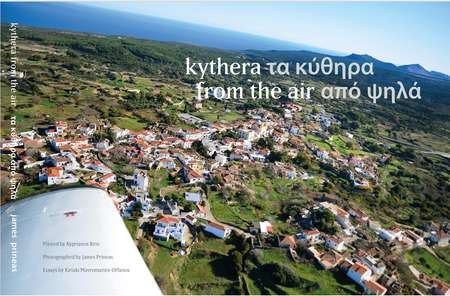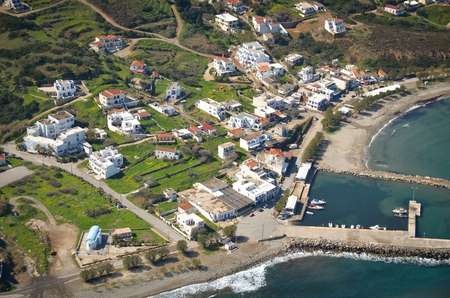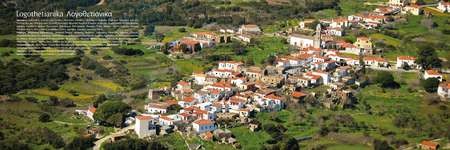Kythera from the Air

Author: James Prineas
When Published: 2013
Publisher: Kytherian World Heritage Fund
Available: In Australia from the Kytherian World Heritage Fund & The Kytherian Association of Australia
George C. Poulos: 02 93888320
Email George Poulos
Email Angelo Notaras
Order more of the 30+ books from the KWHF catalogue by downloading the Order Form, here:
/download/Book_Order_Form.pdf
Kytherian Association of Australia, Book Orders
or Email Administration, Kytherian Association of Australia
In Europe, available from James Prineas.
Email James Prineas
From 2014, the book will be available from all good book shops on the island of Kythera.
Description: Beautiful coffee table book printed on 118gsm art paper. 272 pages. Hardback.
ISBN: 978-0-9872473-2-2
Other contributors:
Essays: Kiriaki Mavromattes-Orfanos
Translation: Irini Renieri
Greek Editing: Elena Panagopoulou
Plane piloted by: Kyprianos Biris
The book contains photographs of the various villages and places on the island of Kythera, taken from the air.
Subjects: Kythera, also known as 'Cerigo', is a Greek island situated between the southern tip of the Peloponnese and Crete. Its more than sixty villages reveal their organic development from neolithic to modern times. Roads twist like climbing plants into almost every corner of the island. These 280 aerial photographs taken in the verdant winter months, capture the beauty of the entire island.
Typical photographs from the book.

Logothetianika from the air.

Ayia Pelagia from the air.
View / Download a .pdf of 8 sample pages, (pp.72-79) here:
Prineas_sample_ pp72-79.pdf
Kiriaki Mavromattes-Orfanas on what makes the book special and unique
In one of her essays in the book, Kiriaki Mavromattes-Orfanas explains how she always sits in the window seat of a plane in order to catch first glimpses of the Mediterranean and the seas around Kythera. She points out that these views, beautiful as they are, are seen in movement, you cannot ‘fix’ the image and peruse it at your leisure. With James Prineas’ book in your hand, that is precisely what you can do, however.
As Kiriaki states, “it is this view which makes this publication such an interesting one.
Because here in these images, you get to see the villages and towns of Kythera, its beaches and hillsides, its monasteries and churches, its vineyards and olive groves, its cypress trees, its roads and rivers and gullies and ravines, its hidden ponds and ancient waterways. You become aware of the precipitous nature of its cliffs and the stark rise of its mountains. You get to see where worked land ends and wilderness begins. The islands wounds and scars become apparent to you and you cn hear the e echoes of the silence of those now still, but once vibrant villages left' ‘erima kai mona’ as their population slowly deserted them. You can follow the coastline, noting were it is accessible and where it is not and wonder about which beaches Helen went to with Paris, looking for a private moment with her lover before she made that fateful choice and plunged her world into war. And your favourite beach, or your grandfather s house, or the home you grew up in, is presented in a different way and you can finally see the sense of the division of family property - the ‘adelfomerasmata’.
From the ground you may not be aware that your village is surrounded on three sides by a ravine, or how high it sits above the sea, but seeing it from above, you get to understand why itis where it is and how the terrain is king”.
Some reactions to the book:
Georgia Pine, California, USA.
"I've been enjoying the various photos and reading the essays. It's going to take a while to get through it as it is heavy to handle. What a terrific legacy for all of us and for future generations! Great idea to include surnames with each village."
Dimitris Koutrafouris, a Bank Manager of the of National Bank of Greece, Kythera, placed the book on display in the Potamos branch in the summer of 2013.
As locals and Kytherians of the Diaspora thumbed through the book, their first instinct was to try and find their own houses, or those of their grandparents and relatives.
Most were not satisfied until that were certain that they had found their houses. Often they had to solicit the help of relatives and friends to help locate them.
The book contains virtually every structure on the island, in every part of the island, which makes it a very valuable Kytherian resource.